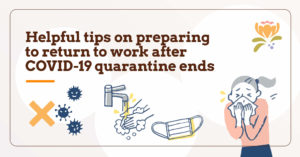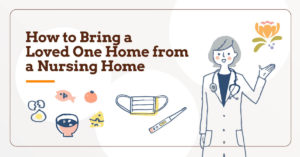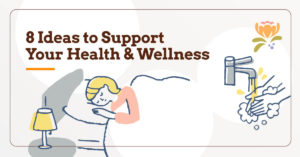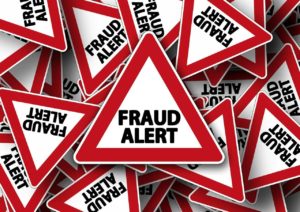Heart Health – Not Just Once a Year, and Not Just for the Elderly
February is generally the month our hearts receive extra attention – both in love and health! Designated National Heart Awareness month, numerous events, like wearing red on February 4th, are held to raise awareness of serious heart issues, how to recognize symptoms and how to help prevent traumatic episodes. While heart disease is often thought of as an “old person” problem, heart attacks, strokes
Two of the most prominent, and feared, cardiovascular issues are
Heart Attack and Stroke Symptoms

Since heart attack and stroke can strike without much warning, it is imperative to know common symptoms so that you are more likely to recognize the severity of the health concern and reach out for medical assistance immediately.
HEART ATTACK SYMPTOMS
- CHEST DISCOMFORT: Most heart attacks involve discomfort in the center of the chest that lasts more than a few minutes, or that goes away and comes back. It can feel like uncomfortable pressure, squeezing, fullness or pain.
- DISCOMFORT IN OTHER AREAS OF THE UPPER BODY: Symptoms can include pain or discomfort in one or both arms, the back, neck, jaw or stomach.
- SHORTNESS OF BREATH: Difficulty breathing can be with or without chest discomfort.
- OTHER SIGNS: Some symptoms act like other illness, such as breaking out in a cold sweat, nausea or lightheadedness.
Symptoms can vary between men and women. While women can and often do display the more traditional symptoms listed above, women’s symptoms tend to be more intense and frequent regarding feelings of having a bad case of the flu or extreme upper back pressure that feels like something squeezing around them. Jaw pain and fainting are also more common complaints among women suffering a heart attack.
STROKE SYMPTOMS
Spot a stroke F.A.S.T. Keep this acronym in mind to get help immediately. Stroke treatment is more successful the earlier it is addressed.
- FACE DROOPING: Does one side of the face droop or is it numb? Ask the person to smile.
- ARM WEAKNESS: Is one arm weak or numb? Ask the person to raise both arms. Does one arm drift downward?
- SPEECH DIFFICULTY: Is speech slurred, are they unable to speak, or are they hard to understand? Ask the person to repeat a simple sentence, like “the sky is blue.” Is the sentence repeated correctly?
- TIME TO CALL 9-1-1: If the person shows any of these symptoms, even if the symptoms go away, call 9-1-1 and get them to the hospital immediately.
Tests to Help Make a Proper Diagnosis
If you or a loved one do seek medical care because of a suspected heart attack or stroke, experts recommend going straight to the emergency room and not an urgent care clinic. Once at the hospital, there are several tests that should usually be administered to determine the severity of an episode.
1. Ask for a coronary artery calcium scan (CACS)
A CACS is the most accurate way to find out if heart arteries are blocked.2.
2. In the ER, never leave without a complete evaluation
What to ask for in the ER:
- A thorough evaluation should be given. This should include all vitals and appropriate tests.
- A 2nd ECG compared to the one initially administered will note improvement or decline.
- A definitive test before discharge, like a treadmill stress test – preferably with some type of imaging to detect artery clogs – helps detect abnormalities that may not be picked up otherwise.
3. Ask for 5 advanced lab tests
Insist on modern tests to evaluate the following markers. These can also be done during a doctor’s visit for follow-up and continuing care.
Advanced lipid profile: Measures LDL particle number and size, which are more predictive of future heart and stroke events.
Lipoprotein A: Research studies indicate that if it’s high, the risk of heart attack and stroke increases.
Homocysteine: If this marker is elevated, it can be treated to bring the level back to normal.
Inflammatory markers: Inflammation is being identified more and more as a cause of heart disease.
TMAO: This new marker has been shown to correlate to heart and kidney damage.
4. Get a vascular screening
While not standard, for seniors who smoke or have family history of early heart disease or stroke, a vascular screening could be vital. This test uses an ultrasound to scan the carotid arteries, abdominal aorta, and legs. The scan should show arteries with no plaque. If there’s “mild” plaque, get a complete evaluation by a vascular expert.
5. Check for drug interactions
Before leaving the hospital, make sure you are aware of the proper use of any medications. Many drugs will interact with each other, food, or supplements. Even if the interaction isn’t fatal, it can affect how well the medication will work or if your senior will have side effects. Be sure to fully understand all medications before leaving the ER.
It’s very important to have a strong health advocate at the ER to help calmly, but firmly push back if the ER tries to discharge a patient without proper evaluation.
Heart Attack and Stroke Prevention
Taking care of your health to try and prevent heart attacks and stroke benefits not only your
- Know your blood pressure numbers and take steps to reduce high blood pressure. This number is a key indicator to the stress being placed on the cardiovascular system.
- Be more physically active. 30-minutes a day is ideal, but at the very least exercising 4 times a week is considered a benefit.
- Maintain a healthy weight. Being overweight places unnecessary stress on organs and joints and it also makes exercise more difficult, which as pointed out above, is a must for prevention.
- Eat a healthy diet. Fruits, vegetables, whole grains, nuts and – good news – dark chocolate (in moderation of course) all are good for your heart.
- Eliminate alcohol or drink in moderation. Studies vary, but most studies show that not drinking alcohol or limiting to a couple glasses of red wine a week is best for your heart.
- Treat diabetes. High blood sugar is a significant health problem in general and is a high-risk indicator for heart disease and stroke. Keeping sugar intake to a minimum and monitoring your glucose levels is very important to cardiovascular health.
- Quit smoking. Did you know that just one year after you quit, you’ll cut your risk of coronary heart disease by 50 percent?
- Visit your doctor regularly. Regular visits allow your doctor to monitor your vitals and blood work, which can often be an early indicator of a larger problem.
Cardiovascular disease is scary. Fortunately, treatment improves steadily and by taking steps to prevent damage to your health and addressing any problems early will help manage the disease. So, this February, take stock of your heart. When did you last have a check-up? Can you add a healthy snack into your diet? Are you exercising enough? Staying heart-wise will protect you for years to come.





